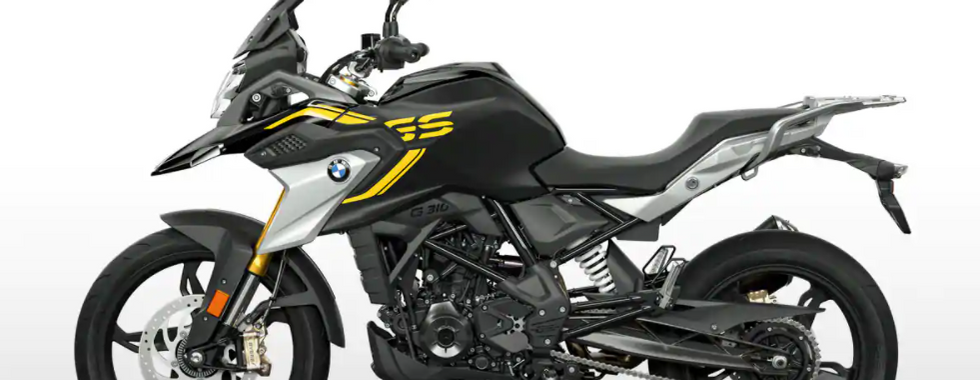It is impossible to deny the impact of the quarter litre motorcycle segment, which is hardly quarter litre anymore! Thanks to the likes of the KTM 390s, Yamaha R3, and a certain Ninja 400.
This segment is so hot that even the ones you may think are too good for it are getting into it. Sounds like BMW. One of the strongest automobile manufacturers in the world.
So after a decade of intense competition, BMW finally made its entry into the beginner sport bike segment with the launch of two motorcycles - G 310 R and G 310 GS - in 2018. Developed by BMW and made in India by TVS, the G 310s are pretty likeable motorcycles - lightweight, looks that justify the R and the GS tags, and built around a responsive chassis delivering a dynamic riding experience.
But especially in India, these two motorcycles had one big problem. They came with a price tag that would make anyone wonder if they were made in India at all. The G 310 R and G 310 GS retailed at over INR 3.5 Lakhs and 4.0 Lakhs, respectively, on-road Delhi. Much more expensive than the competition.
BMW might have underestimated the power of correct pricing, a mistake that you can’t do when you’re up against the KTM 390 Duke, which is an enviable combination of power, features, and competitive pricing. In comparison, the first-gen G 310s lost out against the KTMs on all three grounds.
BMW has now launched the revised versions of the G 310 R and the G 310 GS with some important updates that make them better motorcycles. And one of the biggest things the company has fixed this time is the price. Launched at INR 2.45 Lakhs and 2.85 Lakhs ex-showroom, Delhi, the smaller R and the GS are more than INR 60,000 cheaper than their predecessors. That is a huge price drop… huge!
What’s more, both these motorcycles now undercut the KTM 390 Duke and the 390 Adventure in price. And while the G 310s still retain the same 313cc single-cylinder engine with unchanged power and torque outputs, they are now much better placed price wise and the new updates make them a worthy competitor as well.
What are the updates?

Both the G 310 R and G 310 GS have got similar updates:
Euro5/BS6 engine
Ride by wire throttle
Slipper clutch
Adjustable front brake and clutch levers
LED lights all around
And new colours, of course
Reduced price
Besides the mandatory change to the latest emission norm, every other update is becoming a standard feature in this segment and so, extremely important. BMW claims better throttle response thanks to ride by wire and enhanced riding experience with adjustable levers and slipper clutch.
We are yet to ride the motorcycles and so can’t comment on the effect of these changes. And we are expecting a smoother engine which was one of the weak points previously.
Fit n finish and build quality

BMW is one of those manufacturers who doesn’t gives any less importance to visual quality just because they are building their smallest motorcycles. It doesn’t work that way and the G 310s look absolutely pleasing to the eyes. Impeccable fit n finish for the money and they look solid.
Yes, they still carry the same LCD display instead of a TFT screen, but BMW does things when they think they should. Probably this is why this is the first set of updates to the G 310s.
How are the updates compared to the TVS RR 310?

An obvious question, I believe. The TVS RR 310 is based heavily on the G 310 platform but tweaked suitably everywhere for its full-faired design and forward leaning riding stance. TVS has even incorporated its own ECU for better top end performance which is not just the result of its aerodynamic bodywork.
In comparison, the RR 310 gets a TFT display along with three riding modes besides other changes that are similar. While we can always argue the lack of a TFT display in the G 310s, it is still a personal preference for many people. Regarding the riding modes, that’s a different thing and depends entirely on what the manufacturer is trying to achieve.

A motorcycle with 34 PS doesn’t require riding modes. And I don’t believe that riding modes, in the case of the 310, are anywhere nearly as much a safety feature as the ABS. Moreover, I believe riding modes do not mean the same thing for TVS and BMW in this segment. For TVS, it is a big deal. The RR 310 is their biggest, most powerful, and most advanced motorcycle ever. For BMW, the 310 is their smallest. For them, giving ride by wire in the G 310 would be just a flex.
I’m not saying this is the reason BMW didn’t do it. I wouldn’t know anyway. But yes, it won’t be a big deal for them.
The upgrades given to the G 310 R and the G 310 GS are still significant but overall, they remain relatively simpler motorcycles compared to their competition, which is not a bad thing. They also don’t get switchable ABS (present in both the 390 Duke and the 390 Adventure) nor do they get traction control (present in 390 Adventure).
As I said, we can always make an argument for and against them. But I like that they are less complicated technologically compared to some of their competition but still thoroughly modern. And now, they are at a strong price point too.
I am so looking forward to riding them.

















Comentarios